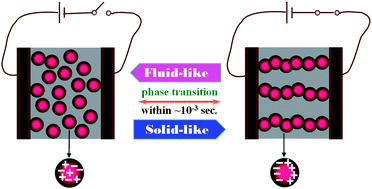Electrorheology of polymers and nanocomposites
Abstract
This highlight aims to report electrorheological (ER) materials in state-of-the art polymeric particles and their various nanocomposites with clay, mesoporous inorganics and

* Corresponding authors
a
Department of Polymer Science and Engineering, Inha University, Incheon, Korea
E-mail:
hjchoi@inha.ac.kr
b Department of Chemical Engineering, Carnegie Mellon University, Pittsburgh, PA, USA
This highlight aims to report electrorheological (ER) materials in state-of-the art polymeric particles and their various nanocomposites with clay, mesoporous inorganics and

 Please wait while we load your content...
Something went wrong. Try again?
Please wait while we load your content...
Something went wrong. Try again?
H. J. Choi and M. S. Jhon, Soft Matter, 2009, 5, 1562 DOI: 10.1039/B818368F
To request permission to reproduce material from this article, please go to the Copyright Clearance Center request page.
If you are an author contributing to an RSC publication, you do not need to request permission provided correct acknowledgement is given.
If you are the author of this article, you do not need to request permission to reproduce figures and diagrams provided correct acknowledgement is given. If you want to reproduce the whole article in a third-party publication (excluding your thesis/dissertation for which permission is not required) please go to the Copyright Clearance Center request page.
Read more about how to correctly acknowledge RSC content.
 Fetching data from CrossRef.
Fetching data from CrossRef.
This may take some time to load.
Loading related content
